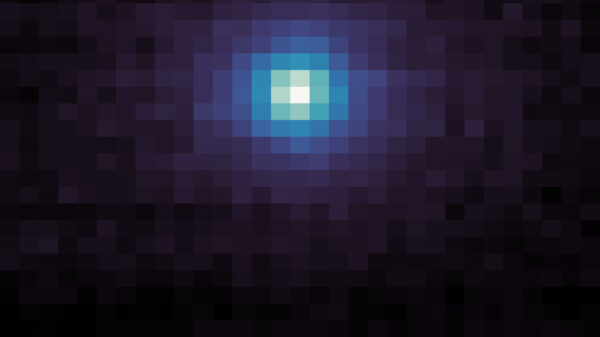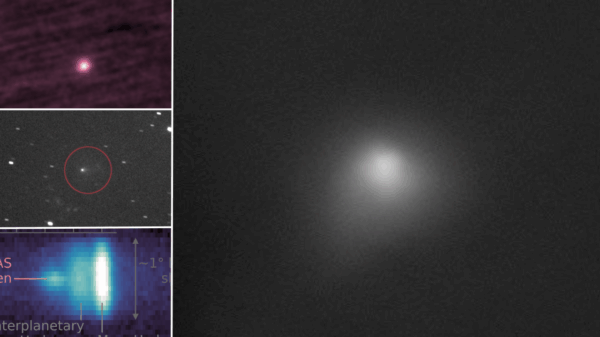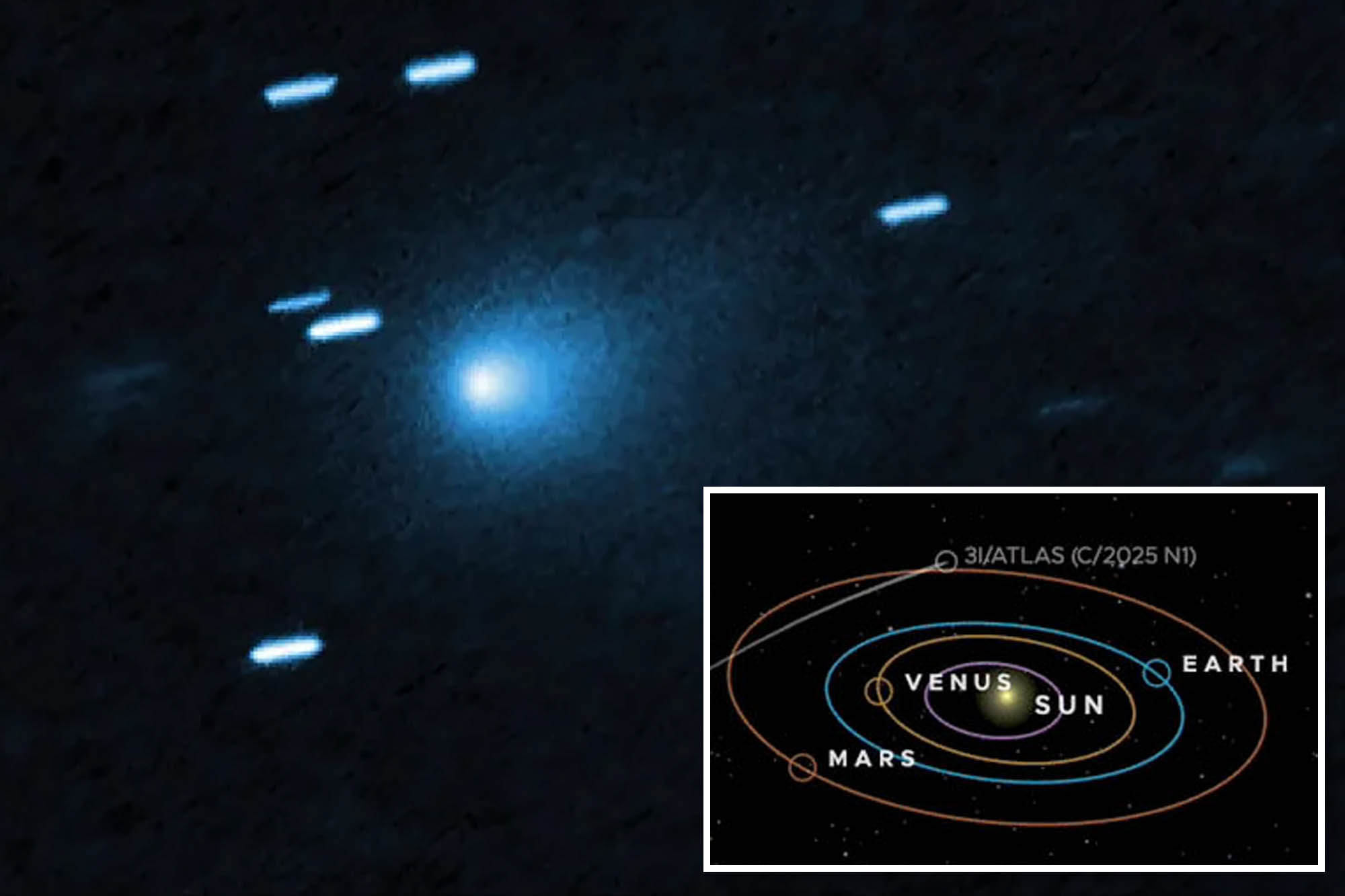The interstellar object known as 3I/ATLAS has exhibited unusual characteristics as it approaches the Sun, raising intriguing questions about its nature. The object, approximately the size of Manhattan, demonstrated signs of non-gravitational acceleration and appeared significantly bluer than the Sun during its recent pass. These observations have led Avi Loeb, a Harvard astrophysicist, to propose the possibility of an artificial origin for the object, potentially indicating the presence of an alien craft.
NASA recorded the non-gravitational acceleration of 3I/ATLAS this week, which suggests a dramatic outgassing event. Such behavior is typically associated with comets, where the release of gas causes the object to lose mass and create a plume of debris. According to Loeb’s recent paper, the combination of this accelerated movement and the object’s striking blue hue may point to an advanced propulsion system or an internal engine.
In a Medium post published on Friday, Loeb explained, “This might also explain the report on 3I/ATLAS getting ‘bluer than the Sun.’” He speculated that this blue appearance could be attributed to a hot engine or a source of artificial light, although he acknowledged it might also be a natural characteristic of a comet.
As 3I/ATLAS passed within approximately 172 million miles of the Sun, Earth-based telescopes were unable to capture direct measurements due to the planet’s position on the opposite side of the star. However, several solar-orbiting spacecraft managed to detect a “rapid brightening” of the object, which was noted to be “distinctly bluer than the Sun,” according to findings from the US Naval Research Lab.
Loeb remarked that the hue of the object is “very surprising,” especially when compared to earlier observations that indicated it was red before shifting to green. The upcoming closest approach of 3I/ATLAS to Earth on December 19, 2023, when it will come within about 167 million miles, presents an important opportunity for researchers. This pass may provide the best chance to ascertain whether the object is indeed a comet or potentially an artificial construct.
“If we do not observe a massive cloud of gas around 3I/ATLAS in December,” Loeb stated, “it could be an indicator of a propulsion system.” His comments reflect a growing curiosity in the scientific community about the implications of such an object traversing our solar system.
Loeb has expressed frustration over NASA’s decision not to release images captured by the Mars Reconnaissance Orbiter’s HiRISE camera during its close encounter with Mars in early October. According to sources, these highly anticipated images will not be made available until the government reopens.
In response to the growing speculation around 3I/ATLAS, NASA’s Acting Administrator Sean Duffy sought to quell concerns regarding the object’s safety. “NASA’s observations show that this is the third interstellar comet to pass through our solar system,” Duffy wrote on X. “No aliens. No threat to life here on Earth,” he reassured the public in response to inquiries, including one from reality TV personality Kim Kardashian.
As the scientific community continues to monitor 3I/ATLAS, the curiosity surrounding its origins and characteristics will likely remain a topic of interest, blending the realms of astrophysics and the possibility of advanced extraterrestrial technology.





































































